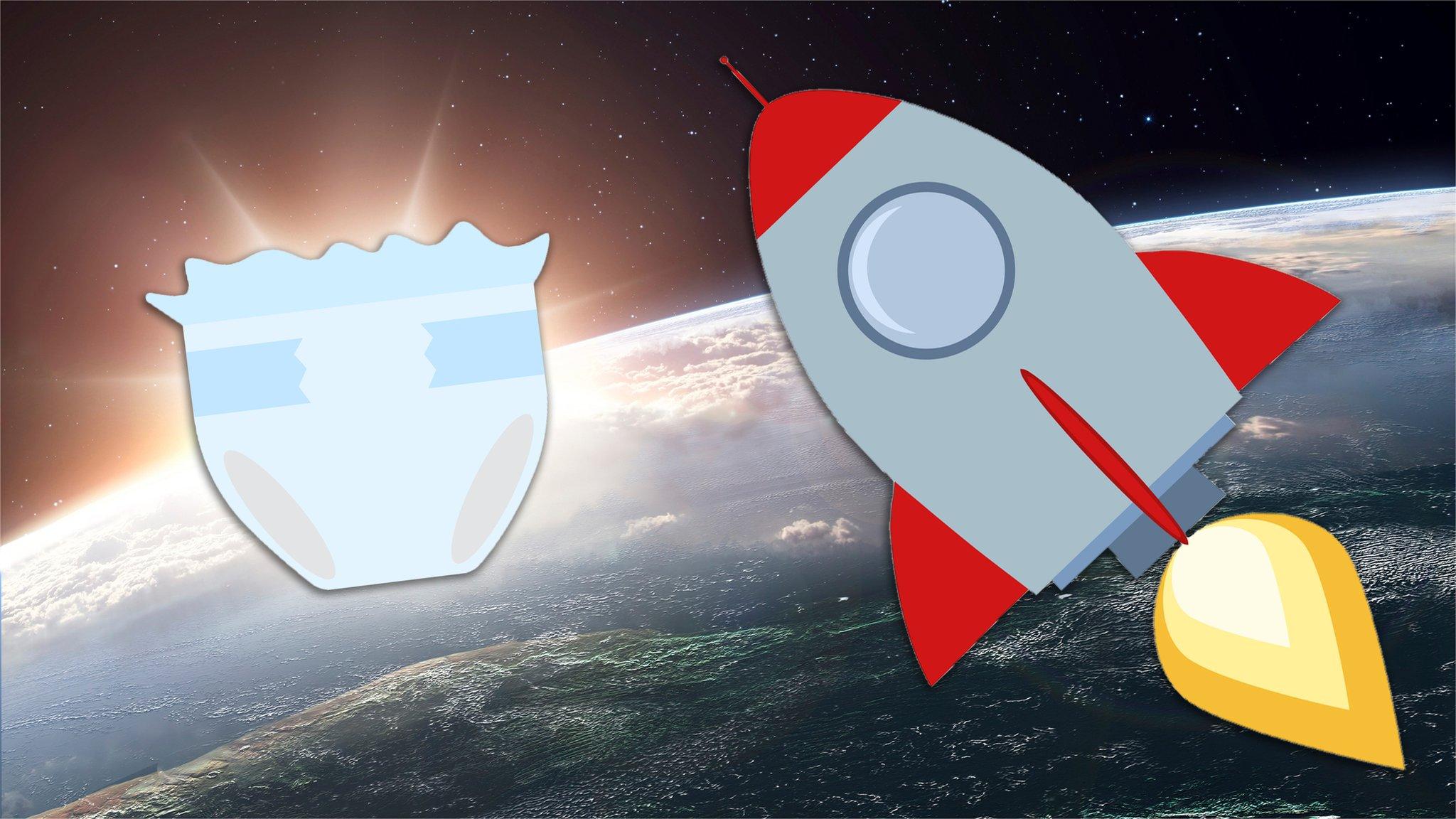Is a broken piece of the Moon floating next to the Earth?
- Published
- comments

A near-Earth asteroid could actually be a chunky piece of moon rock say scientists.
The asteroid named Kamo`oalewa remains close to the Earth and follows its orbit around the Sun.
Not big enough to be a second moon, the asteroid is known as a 'quasi-satellite' because of the way it travels through space alongside the planet.
Earth has five quasi-satellites, but Kamo`oalewa is different, leading scientists to believe it's a broken shard from the Moon's surface.
Red rock
Moon rock is traditionally white in appearance, but experts looking at the asteroid found it was unexpectedly red.
"It doesn't look like what we would have expected if it was just a 'regular' asteroid," says Benjamin Sharkey from the University of Arizona in America.
"We think it came off the Moon," adds Dr Vishnu Reddy another scientist at the University.
It's not unusual for asteroids to be red and it often means they contain metal.
But, by analysing telescope images of Kamo`oalewa, the research team found that the only other space rock that's similar is a sample of Moon rock brought back by the Apollo missions in the 1970s.
Nine million miles away
The asteroid is expected to remain in its current orbit following the Earth for the next 300 years.
Floating at about nine million miles away from planet - which is much further away than the Moon (239,000 miles), but pretty close in space terms - scientists have still found it really hard to analyse Kamo`oalewa properly.
The space rock is about the size of a Ferris wheel, but is also very faint in the night sky, about 4 million times darker than the faintest star.
Kamo`oalewa is a Hawaiian word that roughly means "the oscillating celestial fragment". Oscillating means to move back and forth. Celestial means positioned in space or the sky.
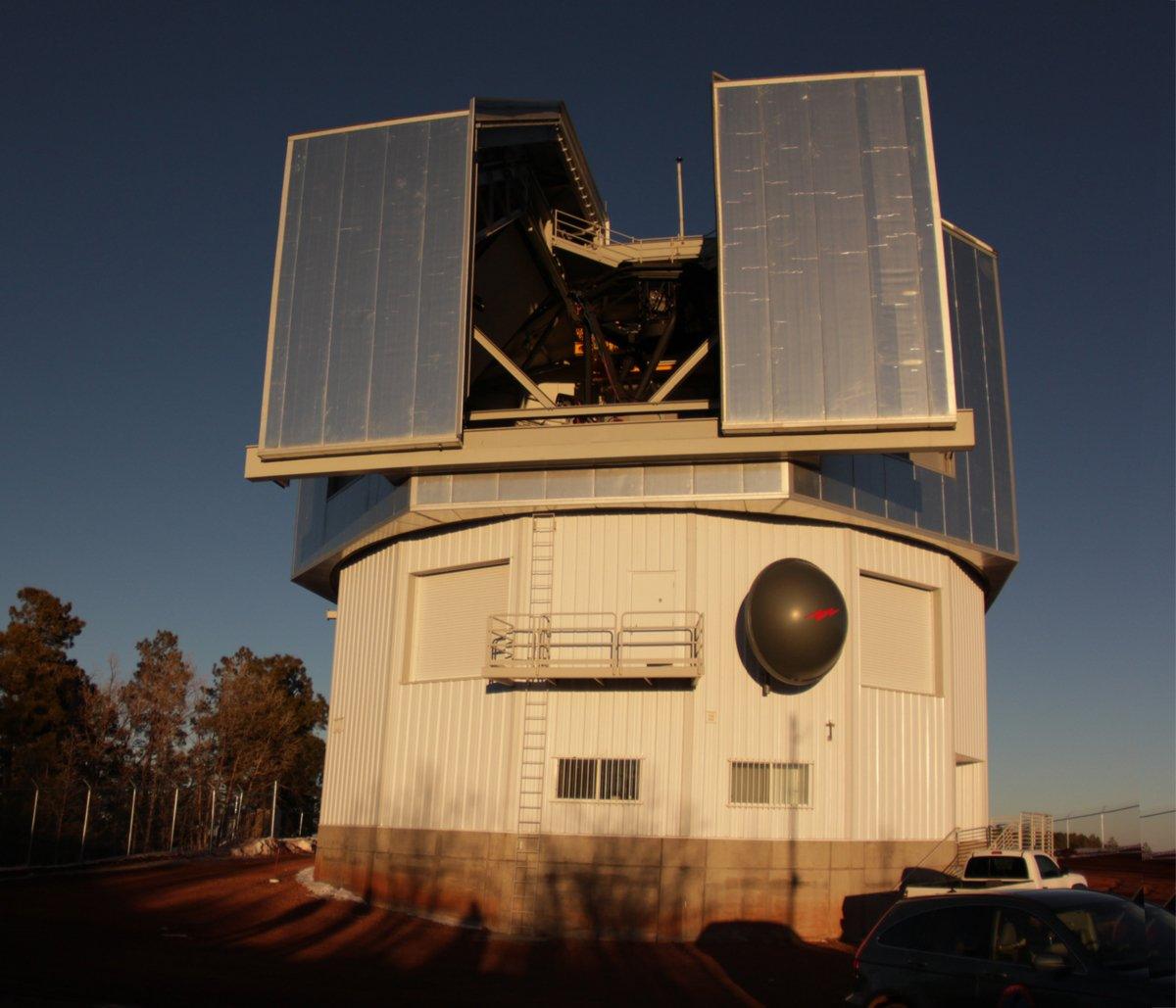
The team needed to use a powerful telescope at the Lowell Observatory outside Flagstaff Arizona, US
Scientists had to use two powerful telescopes, both in Arizona, to look at the asteroid which can only be seen for a few weeks, every April.
The project began in 2016 but the team missed the chance to look at Kamo`oalewa in 2020 because of coronavirus restrictions.
Now after more research, they are able to say with some degree of certainty that the space rock has indeed broken off from the Moon.
"We doubted ourselves," said Dr Reddy, while Sharkey added: "This spring, we got much needed follow-up observations and went, 'Wow it is real.' It's easier to explain with the Moon [theory] than other ideas."
"Finding out when it came off the Moon or where on the Moon it came off of is a tall order - The only way to do that would be to get a sample back," said Dr Reddy.
A mission to the asteroid is currently in development by the Chinese space agency planned for launch by the mid-2020s.
And there's another question left to answer: Why did the asteroid break off from the Moon in the first place?...
- Published11 March 2020
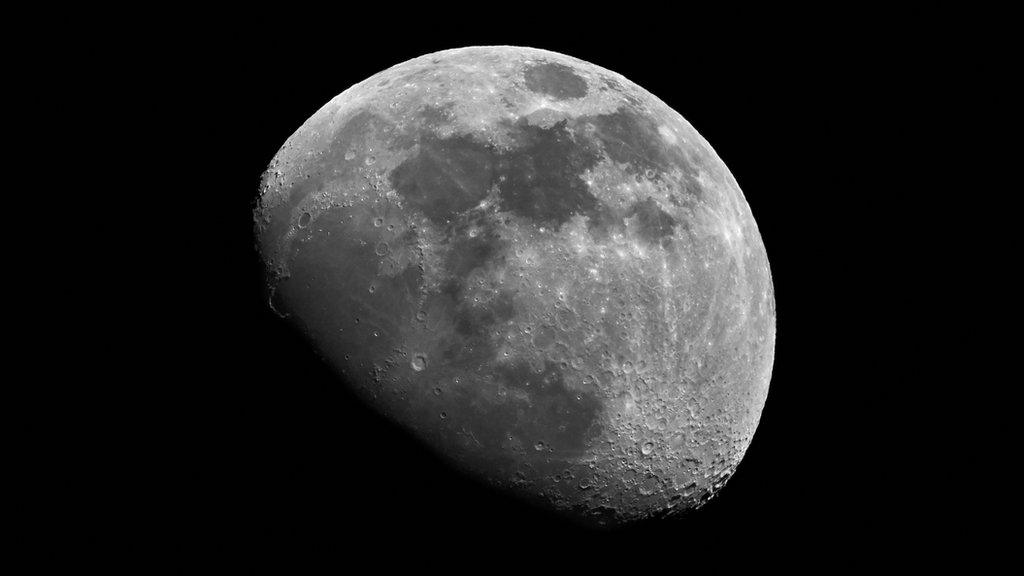
- Published11 November 2021
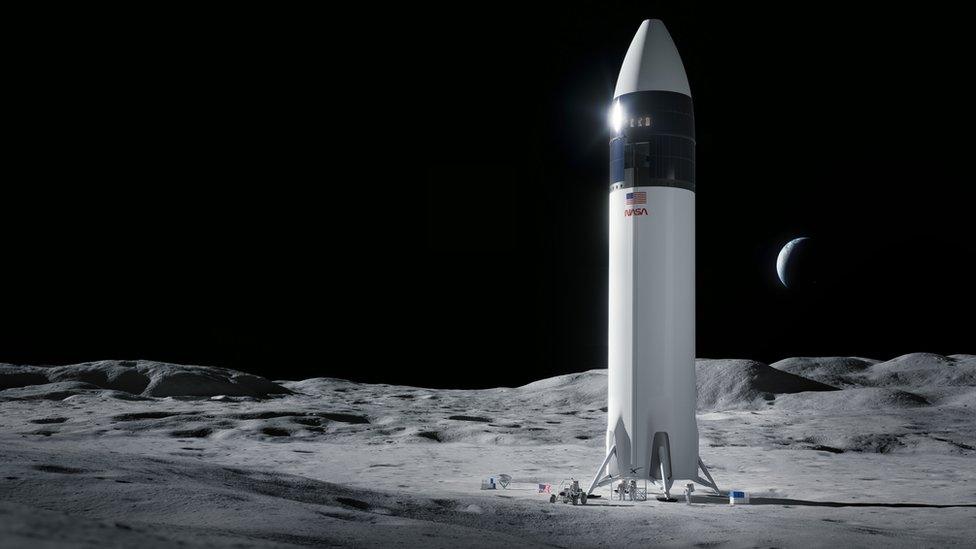
- Published16 July 2024
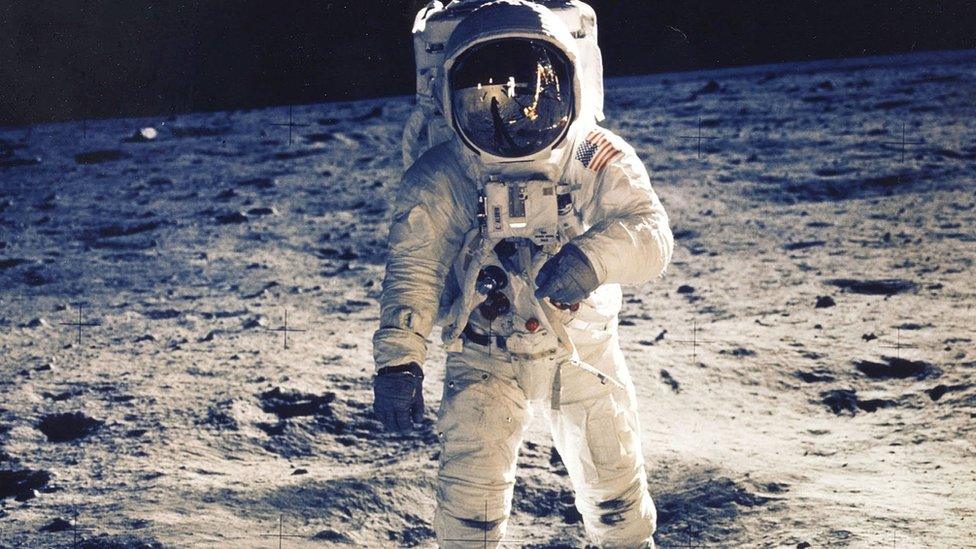
- Published7 November 2021
